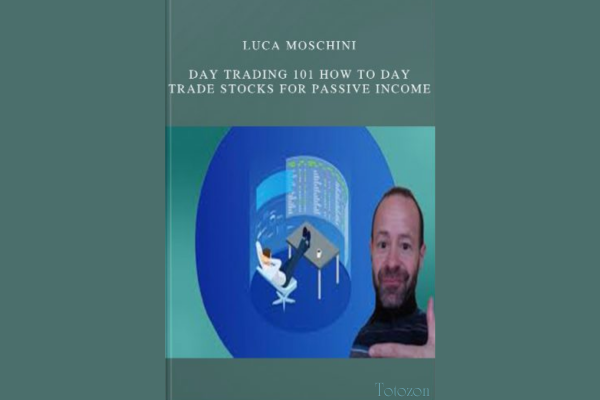Day Trading 101 How To Day Trade Stocks for Passive Income
$6.00
File Size: Coming soon!
Delivery Time: 1–12 hours
Media Type: Online Course
Day Trading 101: How To Day Trade Stocks for Passive Income
Introduction to Day Trading
Day trading has gained popularity as a method to generate passive income by buying and selling stocks within the same trading day. This guide will provide a comprehensive overview of day trading, including essential strategies, tools, and tips to help you get started on your journey to financial independence.
Understanding Day Trading
What is Day Trading?
Day trading involves purchasing and selling financial instruments like stocks, options, or currencies within the same trading day. The primary goal is to capitalize on short-term market fluctuations to generate profits.
Why Choose Day Trading?
Day trading offers the potential for significant returns and the flexibility to work from anywhere. It appeals to those seeking financial freedom and the ability to manage their own investments.
Getting Started with Day Trading
Essential Tools and Platforms
Trading Platforms
Selecting a reliable trading platform is crucial. Popular options include E*TRADE, TD Ameritrade, and Robinhood, which offer user-friendly interfaces and robust analytical tools.
Charting Software
Charting software, such as TradingView or MetaTrader, helps analyze market trends and price movements, providing valuable insights for making informed decisions.
Setting Up Your Trading Account
Open a brokerage account with a reputable firm. Ensure it offers low commissions, high execution speed, and access to real-time data.
Key Concepts in Day Trading
Market Orders vs. Limit Orders
- Market Orders: Execute trades immediately at the current market price.
- Limit Orders: Set a specific price at which to buy or sell, ensuring more control over trade execution.
Understanding Spreads
The spread is the difference between the bid and ask price of a stock. Narrow spreads indicate higher liquidity, while wider spreads can increase trading costs.
Developing a Day Trading Strategy
Trend Following
Trend following involves identifying and trading in the direction of the prevailing market trend. Tools like moving averages and trend lines help spot these trends.
Scalping
Scalping is a strategy focused on making small profits from numerous trades throughout the day. It requires quick decision-making and excellent market analysis skills.
Breakout Trading
Breakout trading involves entering positions when the price breaks through a significant support or resistance level, anticipating further price movement in that direction.
Risk Management in Day Trading
Setting Stop-Loss Orders
A stop-loss order automatically sells a stock when it reaches a specific price, limiting potential losses. This is a critical component of risk management.
Position Sizing
Determine the appropriate amount of capital to risk on each trade. Avoid putting too much capital into a single position to mitigate risk.
Diversification
Diversify your trades across different stocks and sectors to reduce exposure to any single market movement.
Analyzing Market Conditions
Technical Analysis
Technical analysis involves studying price charts and indicators to predict future price movements. Common tools include moving averages, RSI, and MACD.
Fundamental Analysis
Fundamental analysis examines a company’s financial health, including earnings reports, revenue growth, and market position, to assess its stock value.
Executing Trades
Timing the Market
Timing is crucial in day trading. Monitor market opening hours and significant news events that can impact stock prices.
Using Leverage
Leverage allows you to trade larger positions with a smaller amount of capital. However, it increases risk and should be used cautiously.
Evaluating Performance
Keeping a Trading Journal
Maintain a trading journal to record all trades, strategies, and outcomes. This helps identify patterns and improve decision-making over time.
Analyzing Trade Outcomes
Regularly review your trades to understand what worked and what didn’t. Use this analysis to refine your strategies.
Common Pitfalls in Day Trading
Overtrading
Avoid the temptation to make too many trades in a day. Overtrading can lead to higher transaction costs and increased risk.
Ignoring Risk Management
Failing to implement proper risk management strategies can result in significant losses. Always set stop-loss orders and manage your position sizes.
Chasing Losses
Don’t try to recover losses by making impulsive trades. Stick to your strategy and remain disciplined.
Advanced Day Trading Strategies
Algorithmic Trading
Algorithmic trading uses computer algorithms to execute trades based on predefined criteria. This can increase trading speed and efficiency.
High-Frequency Trading (HFT)
HFT involves executing a large number of orders at extremely high speeds, often using sophisticated algorithms and technology.
Conclusion
Day trading can be a viable method for generating passive income if approached with the right strategies and mindset. By understanding market dynamics, developing a solid trading plan, and managing risks effectively, you can increase your chances of success. Remember, continuous learning and disciplined trading are key to becoming a successful day trader.
FAQs
1. What is day trading?
Day trading involves buying and selling financial instruments within the same trading day to capitalize on short-term market movements.
2. How do I get started with day trading?
Start by opening a brokerage account, choosing a reliable trading platform, and familiarizing yourself with essential tools and strategies.
3. What are some common day trading strategies?
Common strategies include trend following, scalping, and breakout trading. Each strategy requires a different approach and skill set.
4. How important is risk management in day trading?
Risk management is crucial in day trading. It helps protect your capital and minimize losses through techniques like stop-loss orders and position sizing.
5. Can day trading be a source of passive income?
While day trading requires active participation, successful strategies and disciplined trading can lead to significant profits, contributing to passive income over time.
Be the first to review “Day Trading 101 How To Day Trade Stocks for Passive Income” Cancel reply
You must be logged in to post a review.
Related products
Forex Trading
Forex Trading
Forex Trading
Forex Trading
Forex Trading
Forex Trading
Forex Trading
Forex Trading
Forex Trading
Quantamentals – The Next Great Forefront Of Trading and Investing with Trading Markets

 The Trading Blueprint with Brad Goh - The Trading Geek
The Trading Blueprint with Brad Goh - The Trading Geek  White Phoenix’s The Smart (Money) Approach to Trading with Jayson Casper
White Phoenix’s The Smart (Money) Approach to Trading with Jayson Casper 




















Reviews
There are no reviews yet.